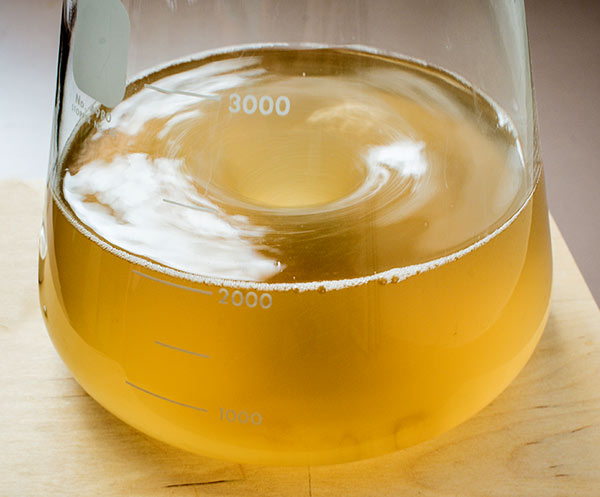
Test yourself on the health of your yeast starter in this week’s Tuesday Beer Trivia.
Being responsible for the health of your yeast is like being responsible for a small community. There are billions of cells and many factors that should be considered in the creation of your yeast starter. Brush up on some of the best practices in this week’s Tuesday Beer Trivia.
After you take the Beer Trivia quiz below, scroll down to “Beer Trivia Answer Explanations” section to learn more about yeast starters.
[polldaddy type=”iframe” survey=”7A75CCFC9606880A” height=”auto” domain=”2491351″ id=”beer-trivia-example-26″]
Click To Expand
The following explanations were taken from “The Secret to Healthy Yeast: Making a Starter” by Jamil Zainasheff in the March/April 2007 issue of Zymurgy.
Question 1: You do not want to make a high-gravity starter to grow yeast. As a ballpark measurement, use about 6 ounces (by weight) of dry malt extract to 2 quarts of water (180 grams to 2 liters).
Question 2: Key nutrients in yeast starters include oxygen, zinc, amino acids, and nitrogen. Oxygen is critical to the survival and growth of yeast and tends to be the most limiting factor for starters.
Question 3: The pH of a starter should be around 5, but if you can’t test it, don’t worry. Typical wort ranges from 4 to 6 pH, so use a high quality dry malt extract to be safe.
Question 4: In his book, An Analysis of Brewing Techniques, George Fix states that you need to pitch 0.75 million cells per milliliter for an ale and 1.5 million cells per milliliter for a lager. There are about 3,785 milliliters in a gallon and about 20,000 milliliters in 5.25 gallons.
Question 5: Yeast can be delicate, and storing it below or above room temperature can shock the cells, thus not creating the healthiest version of the yeast. Just like pitching temperature, you want to be sure it stays somewhere between 70 and 72°F (21 and 23°C).


Share Post